Written on 7th November, 2020 | 6 min read
SaaS Content Strategy: Should You Build a Funnel or Just Educate Users? A Case Study
If your SaaS content strategy follows the mantra "just post something and they'll come", you're probably in the same situation as the startup in this story. A content audit helped them understand why their content was performing so badly.
Andreea Macoveiciuc
Strategist @School of Content
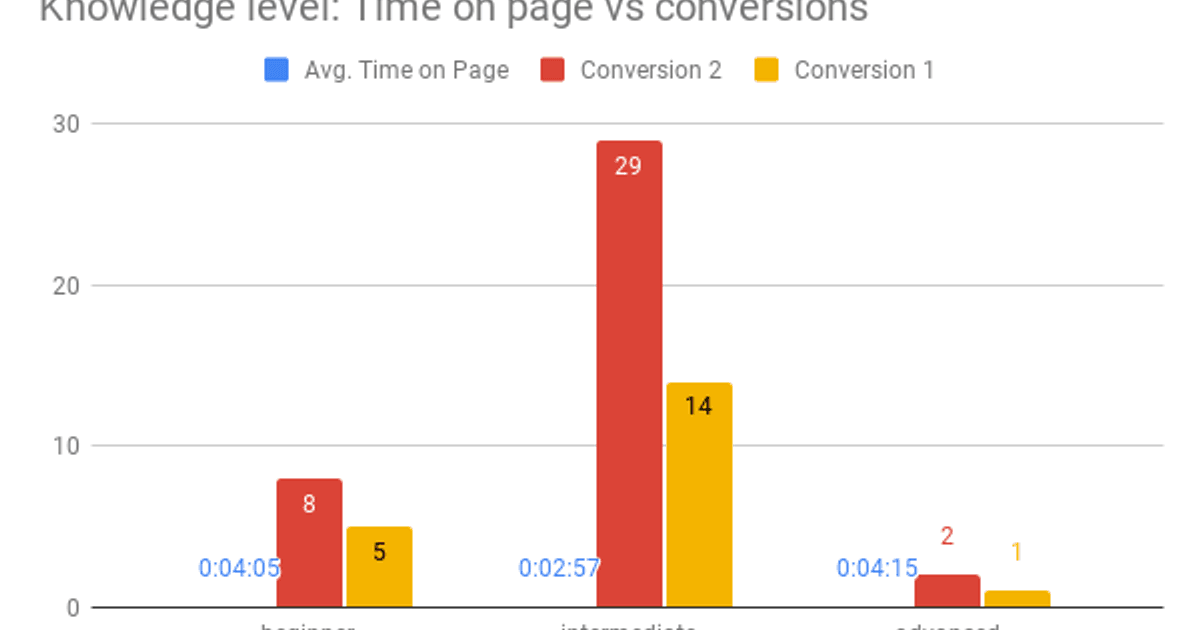
A couple of weeks ago I received a question from the owner of a 3-year old SaaS company regarding the type of content they should focus on to get more leads through content marketing.
Their story, in big lines, was as follows: content was the only piece in their marketing puzzle that didn't work properly. Most of their clients were acquired through cold outreach or word of mouth, so the cost of acquisition was quite high and they were looking for ways to decrease it.
They didn't have a clear strategy in place; they did have a content calendar but the topics were chosen almost randomly, based on what the team though was relevant for their target users, and on keyword traffic potential.
Their target audience is mostly decision makers — marketing managers, data/analytics managers, or product managers. Their product is an analytics tool aimed mainly at enterprises. They have super strong competitors in the content and audience analytics niches.
I was curious to see why their content wasn’t performing, so we agreed to do a content audit and craft a small action plan based on the findings.
The content audit: How search intent, knowledge level and target persona influence traffic and conversions
We started the audit with a couple of goals in mind. We wanted to see:
which funnel stage gets more page views and conversions
which search intent drives more page views and conversions
the average bounce and exit rates per funnel stage and content type
how the search intent influences page views and conversions
how the knowledge level influences page views and conversions
how the target persona influences page views and conversions
We took this approach because we wanted to first determine the areas of the funnel and the types of content that weren’t performing. Then, we wanted to understand the reasons behind the poor performance.
Was it because the topics were not relevant for the audience?
Was it because the knowledge level (of the content) was too basic or too complicated for their target audience?
Was it because they were targeting and/or attracting the wrong persona?
As usually, we started with the funnel stages, and we weren’t surprised to see that the top of the funnel content was generating the most page views. However, the conversions were almost evenly distributed across the funnel phases.

Image: Conversions 1
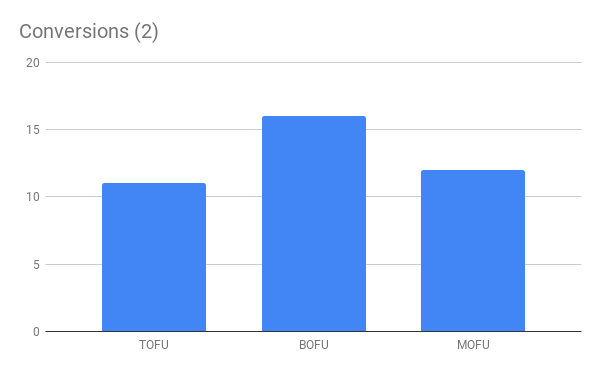
Image: Conversions 2
Next, we looked at the search intent, page views and conversions, to see if anything stands out and brings more insights into the “why”.
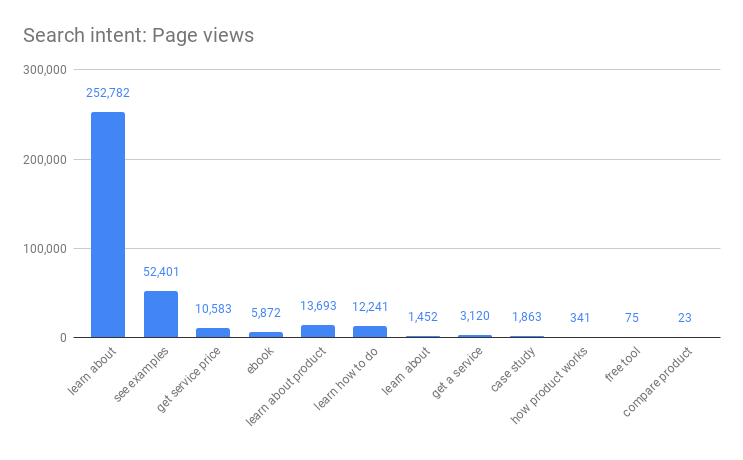
Image: Search intent Page views
We noticed that most of the page views were coming from educational content teaching users about the niche or showing examples and how to perform certain marketing operations.
The content pieces talking about the product — how it works, price — were getting fewer page views. We started to form some hypotheses as to why this SaaS company had generated only 59 conversions from 300K views.
Very likely, their focus on creating educational content without really mapping it to the funnel or worrying about the target user was one of the reasons behind their content’s poor performance.
But we wanted to see if the conversion numbers confirmed our initial thoughts.
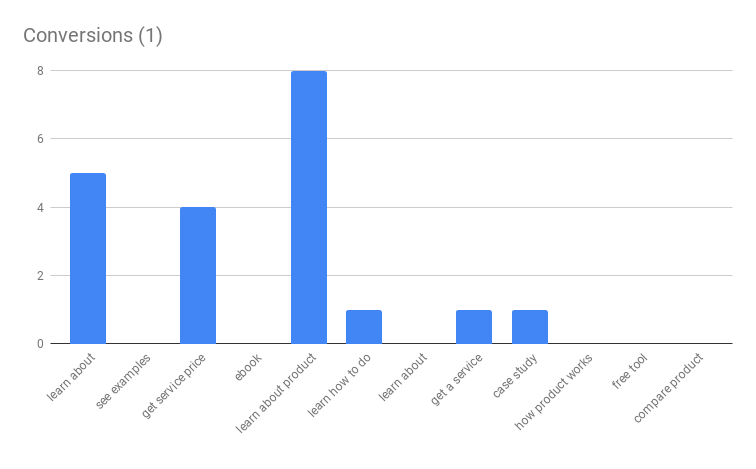
Image: Conversions per search intent 1
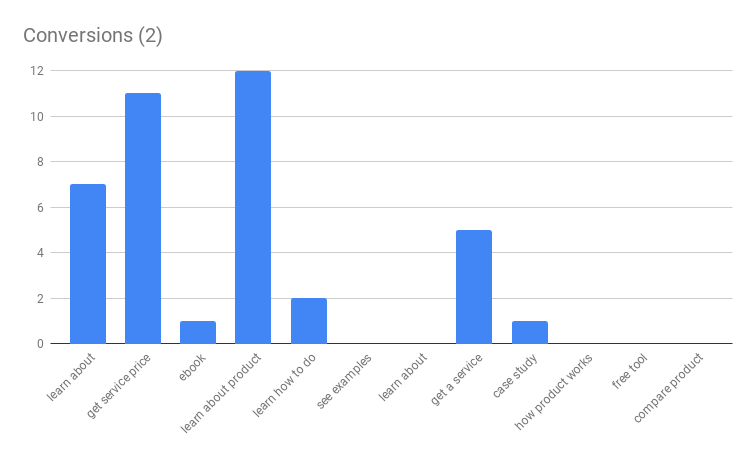
Image: Conversions per search intent 2
We saw indeed that the content talking about the product, its price, or how other companies used the product to improve their performance was generating more conversions than the broad, off-topic content.
However, we didn’t have enough clarity yet on what to do next. We knew that the TOFU content performed poorly, and we had an idea about the reason behind this — the content was mostly educational. But when we looked at the full funnel, we saw that the middle and the bottom content performed quite bad as well.

Image: Conversions vs page views
The conversion rates throughout the funnel were really poor, under 1%, so we clearly needed to investigate further in order to draw some relevant and actionable conclusions.
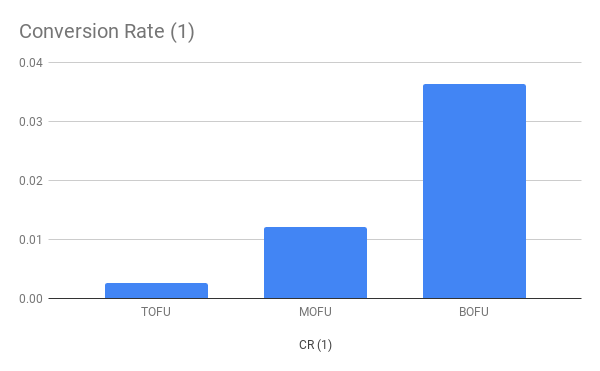
Image: Conversion Rate 1
The next step was to look at the relevance of the content published by this SaaS company. We noticed that the content related to the niche — digital marketing — but not related to the product was generating most of the page views.
Of course, this was happening because most of their content was targeting broad marketing terms. On the other hand, the content that was related or strongly related to the product was responsible for only 20% of the total page views.
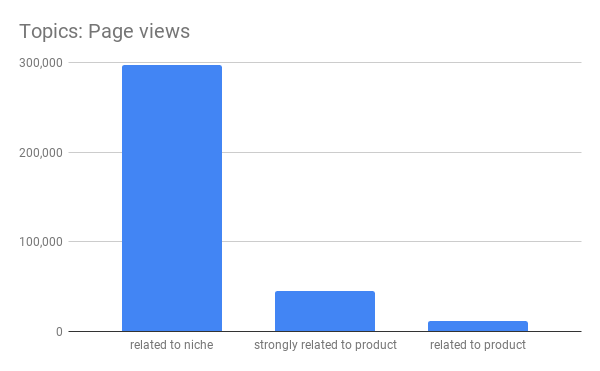
Image: Topics Page views
Now, imagine that you're the owner or marketing manager of this SaaS company and your content team tells you that your traffic is increasing every month, so you're on a good path. Yet, when you look at the impact on revenue or leads acquired through content, things don't really add up.
When we looked at the conversions for topics related to their niche, but not to the product, we saw that the numbers were lower than those coming from content strongly related and related to the product. So we knew now that writing about everything marketing-related was not the way to go for this particular company.

Image: Topics Conversions
We then analyzed the knowledge level of their content and we noticed the same pattern: the content targeting beginners was getting more page views, but the conversions were lower. The interesting part here was that the super-advanced content wasn’t generating more conversions than the beginner topics.

Image: Knowledge level Page views
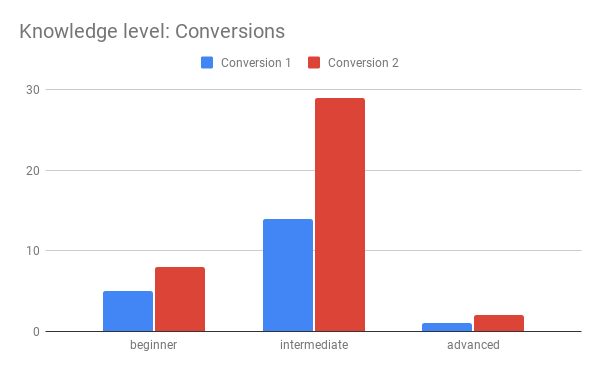
Image: Knowledge level Conversions
This SaaS product is doing some smart things with AI, so it’s very likely that the users consuming the advanced pieces of content are the ones interested in learning how to solve the problem on their own, without the product.
We wanted to see if this hypothesis was true, so the next step was to look at the target personas and how it related to page views and conversions.
We saw that the content written for anyone interested in learning about digital marketing was generating a lot of page views, while the pages targeting potential buyers were, again, responsible for around 20% of the page views.
However, the conversion numbers were much higher for the highly specific content.
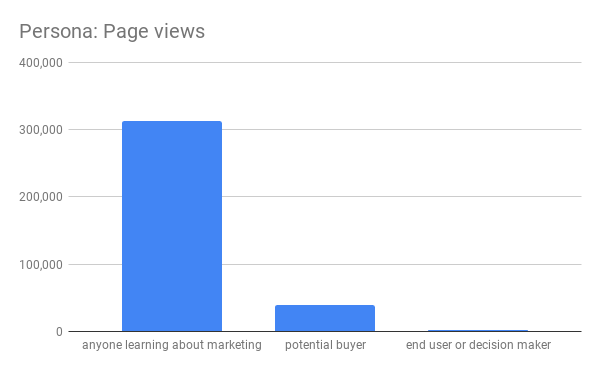
Image: Persona Page views
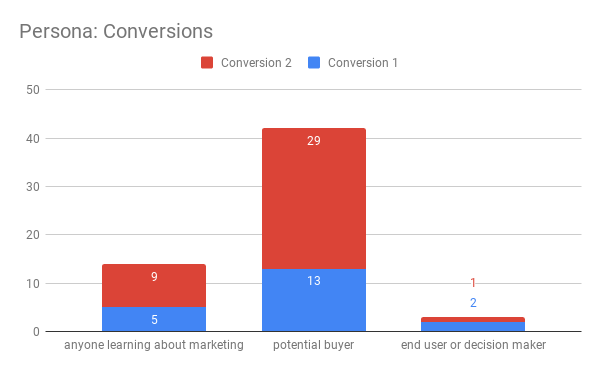
Image: Persona Conversions (1)
As we didn’t have any data about the company size or job title of these users, it was hard to say who exactly was consuming the content. But we did know that the content pieces focused on the pain points and needs of potential buyers were converting better.
So the last step was to put these findings together and decide on some action points for this SaaS company.
Should you worry about funnels, search intent, and target personas?
This firm is not a unique case. Although they’re only 3 years old, they’ve created a huge amount of content, and unfortunately, most of it was published without any strategy in place.
They focused a lot on top of the funnel content, in an attempt to educate the market and to position themselves as an authority in the field. The result, though, is quite the opposite: they're a good source of digital marketing information for beginners, but they're not exactly the go-to resource for their main areas of expertise.
The content audit helped them see that:
Most of their content targets broad marketing terms, is written for beginners, and it’s generally directed to those who just want to learn about marketing.
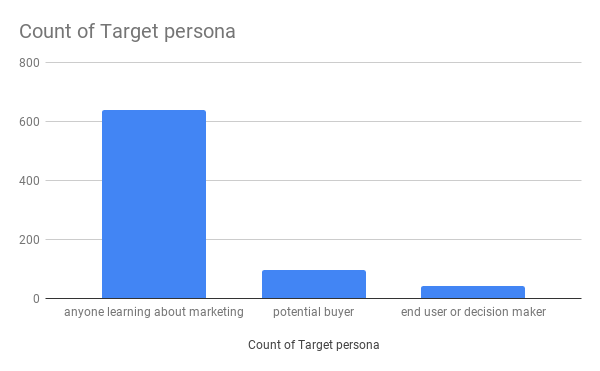
Image: Count of Target persona
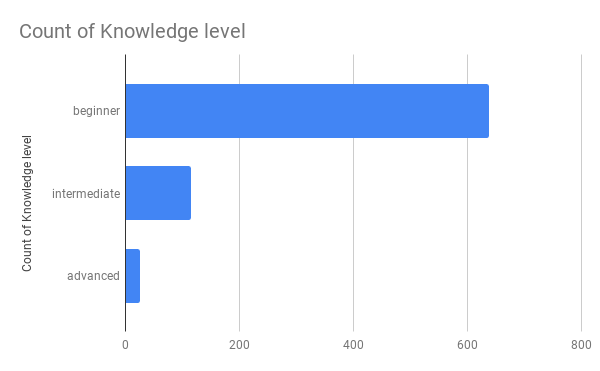
Image: Count of Knowledge level
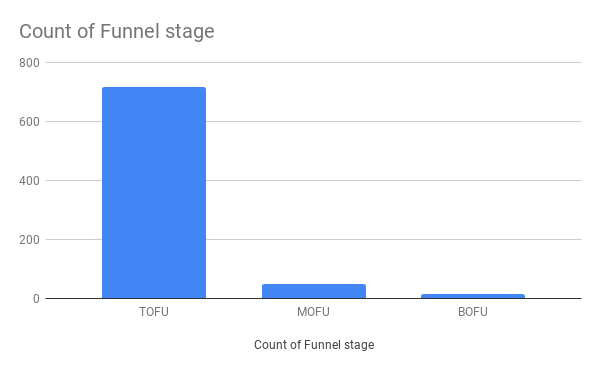
Image: Count of Funnel stage
This content gets a lot of traffic but the conversions are poor. If this company wants to improve their conversion rates, they need to audit this content further, look at ways to optimize it for the right knowledge level and persona, and then distribute it in relevant channels.
For example, if we look at the average time on page, we see that the beginner and advanced content is consumed for 4–5 minutes on average, while the intermediate one has an average time on page of 3 minutes.
The top and middle of the funnel do better from this point of view, but if we look at the topics, we notice that content that’s related to the product has longer read times. To get some more actionable insights here, let’s analyze also the search intent and how it relates to the reading time.
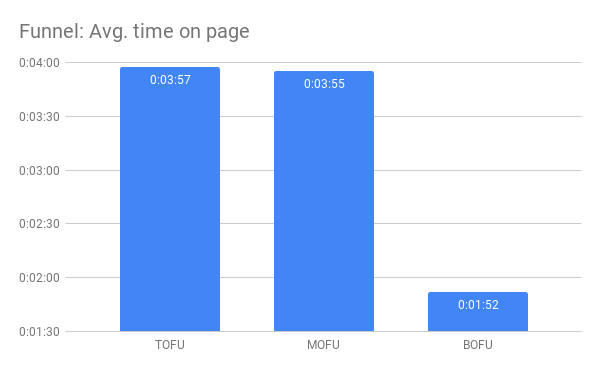
Image: Funnel Avg. time on page
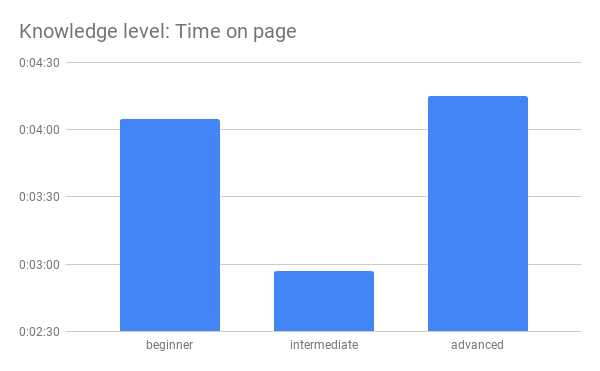
Image: Knowledge level Time on page
We notice that pages with commercial intent such as pricing pages, service- and product-related content, as well as content with learning intent — how the product works, case studies — have lower time on page.
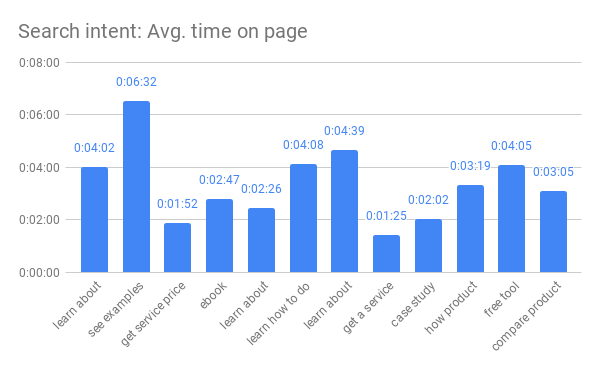
Image: Search intent Avg. time on page
Still, we know that the conversions for these content types are better, so in this case, we might conclude that longer content doesn’t necessarily help this company get more clients, although it does attract more readers.

Image: Topics Time on page vs conversions

Image: Knowledge level Time on page vs conversions
The highly specialized content that teaches users how to perform certain operations doesn’t get that many views and is not converting well, so this type of content should be abandoned.
An alternative is to turn the advanced content into webinars and promote it to companies who have the end-user in their marketing or analytics team. This would ensure that the end-users gain knowledge and learn how to do things directly from this company, therefore using this company’s product.
Finally, we know that the content that performs better in terms of conversions is at the middle and bottom of the funnel, targets topics that are related or strongly related to the product, and is written for an audience with intermediate knowledge.
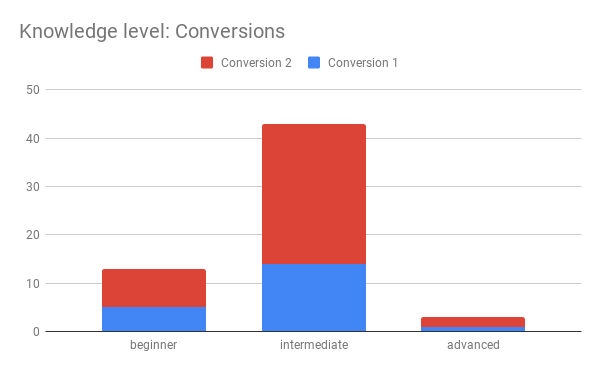
Image: Knowledge level Conversions 1
This audit helped the company in deciding what content to optimize and what pages to retire.
The next step for them is to analyze the structure, quality, and CTAs of the poorly performing content in order to decide how to optimize the pages. Some pieces might require just a change of angle, while others might be too broad and off-topic to be worth the effort.
I hope this gives you a bit of direction and shows you how to approach a content audit if you feel that your content isn’t performing well enough. This particular company had 779 pieces of content published, but if you have above 1000 pages published, you might want to start with a smaller scope when auditing the content.
Feel free to get in touch with our team if you need help with conducting a similar content audit or developing a SaaS content strategy.